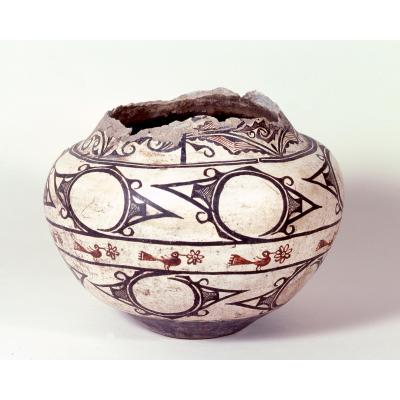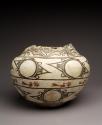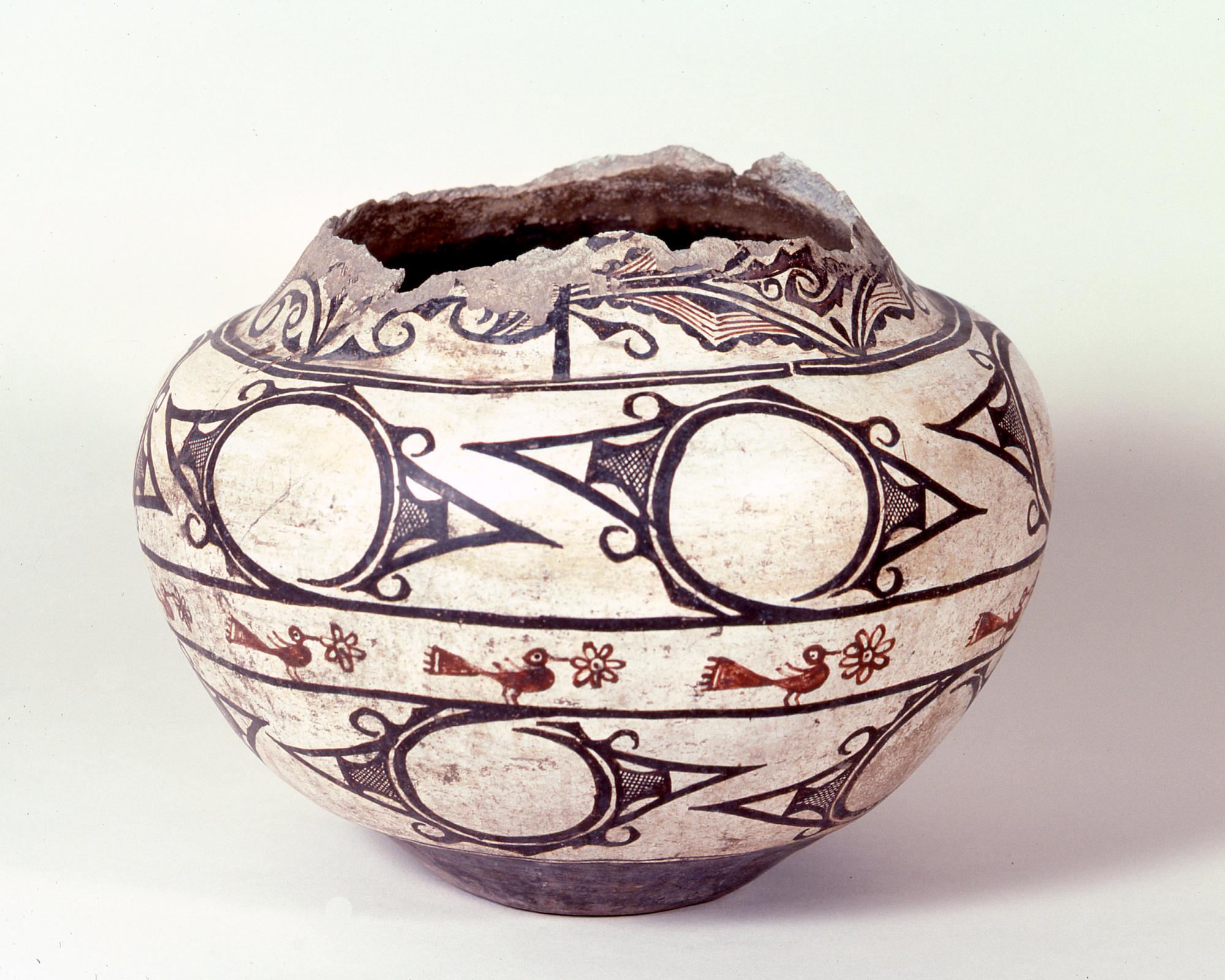
Photograph by Addison Doty. Copyright 2010 School for Advanced Research.
Water jar | K'yabokya de'ele
Date: 1860 - 1870
Artist or Maker: Unknown
Dimensions:
28 × 25.6 cm (11 × 10 1/16 in.)
Weight: 3.3 kg (7.25 lb.)
Medium: clay | paints
Credit Line: Indian Arts Fund purchase for the permanent collection.
Place Made:
Zuni Pueblo, McKinley County, New Mexico, Southwest, United States, North America
Object Number: IAF.788
Not on view
Tribal Collection Review RemarksOctavius Seowtewa during collection review visit Nov. 16 and 17, 2009 (Events Record “Collection Review: Zuni Tribe, Review 3”): The remarks from this review session were deleted in favor of those from the April 2014 review session, due to a rethinking of several of the characteristics of this jar.
The word for a water jar in Zuni is “k'yabokya de'ele,” which translates to “water container vessel” in English. The intended use for these jars was to store and carry water, but they could also be used to store other items.
ADDITIONAL INFORMATION: Jim Enote and Octavius Seowtewa during collection review visit April 10 and 11, 2014 (Events Record “Collection Review: Zuni Tribe, Review 13”): The rim of this jar is completely eroded and chipped away. Among other possible explanations, it’s possible the rim was weakened by use as a water jar and then chipped via routine use of the broken base of another jar as a lid. The neck band consists of four compartments which contain two alternating designs, both of which are variations on a four-sided star surrounded by bird heads, crests, and tail elements, some containing rain hatching lines.
A black thick double line with a line break on the shoulder of the jar separates the neck designs from the body designs. The body designs are divided into three horizontal bands. There are no vertical design compartments. The top band contains a bird head design with crests that repeats six times around the body of the jar. The second band is narrower than the other two and contains ten red birds with long, triangular tails, all facing to the right. They are all standing and each holds a red flower in its mouth. The bottom band contains the same design as in the top band, except that it is flipped. There are only five of them, instead of six, and they are offset from the designs in the top band. There is a black thin black line with a line break separating the body designs from the base.
The base is a solid dark brown with a concavity for carrying on the head. The wear on the base is somewhat lopsided, but the wall of the jar is thicker on one side of the base, so it is natural for it to wear this way. There are two fire clouds on the exterior of the jar. There is a substance adhered to the bottom of the interior that may be wax. There are three cracks that start at the neck and extend down into the body of the jar.
In Collection(s)
Bibliography:
The Pottery of Zuni Pueblo
- Pg. 141
- Fig. 7.45
The Indian Arts Research Center, in collaboration with Native American community scholars, strives to present accurate collections records. Records may be updated as new information becomes available and is reviewed with the Native American community having cultural affinity to particular items. Please write to iarc@sarsf.org if you have questions or concerns related to the documentation.


